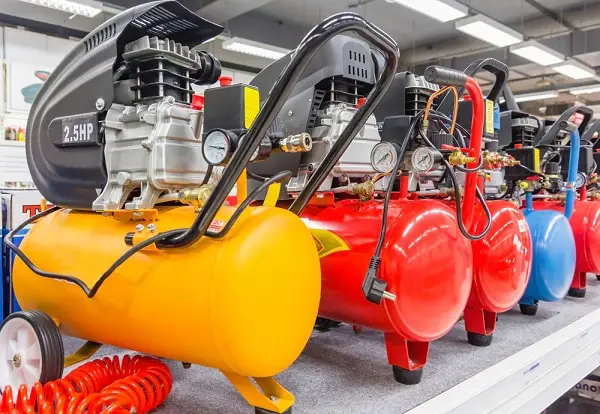
How Do Oil-Free Air Compressors Work?
Indeed, the air compressed in your air compressor can vary in quality compared to other machines. The thing is when your air is exposed to oil, it becomes much more difficult to keep the air pure and clean, which in turn raises the number of expenses you’re bound to deal with. This, of course, is a negative trait of oil air compressors.
However, in response to the concern with oil air compressors, many brands are now offering oil-free air compressors as well. These fine pieces of machinery perform the same jobs effectively and with more savings for your wallet.
It may seem a bit strange that compressors could work without oil, but it’s true. If you’ve been wondering just how these oilless air compressors work, keep reading. Let’s take a look at just that.
How Oil-Free Rotary Screw Air Compressors Work
These pieces of machinery utilize positive displacement. The way these types of air compressors work is very much the same as traditional rotary screw air compressors, only without the introduction of oil to the compression chamber.
Unlike in traditional rotary screw air compressors, the meshing rotors of oil-free rotary screw compressors never touch, therefore eliminating the need for oil. However, their timing gears are still lubricated to allow for maintained positioning, only the oil is applied outside of the compression chamber to avoid air contamination.
To keep oil-free rotary screw air compressors cool during and after the operation, an internal air cooler is commonly used after each stage. Alternatively, some models may use a water-cooled radiator instead.
How Oil-Free Rotary Lobe Compressors Work
Like oil-free rotary screw compressors, oil-free rotary lobe compressors utilize positive displacement. However, what’s different is that these machines consist of two meshing rotors that are equipped with lobe profiles, which of course intermesh as well during operation.
As the air continues to flow into the chamber, discharge ports are closed and sealed off by the lobes on the rotor. Once two discharge ports are exposed to the compression chamber, the air then flows and is discharged.
Same as the oil-free rotary screw compressor, there is no contact between the pieces in the chamber. This results in no need for lubrication inside the chamber, but lubrication is applied to the bearings and gears externally to prevent any oil contamination from the air compressed.
How Oil-Free Rotary Scroll Air Compressors Work
These compressor styles are actually oil-free by construction–they are not reinvented versions of an oil-based compressor. Basically, these compressors work by way of two intermeshing scrolls, rather than two rotors. One scroll remains still as the other orbits around it. As air enters via the suction port found in the stationary scroll, it fills up the chamber in a pressure-regulated area between the scrolls. As the rotating scroll orbits around the stationary scroll, the space available for the air is greatly minimized as it moves toward the discharge port before being released as compressed air.
Since the design of oil-free rotary scroll compressors results in no metal-to-metal contact between the scrolls or any of the components, the need for oil lubrication is completely eliminated. These pieces of machinery utilize air cooler systems that exist internally within the machine.
Related Video:

